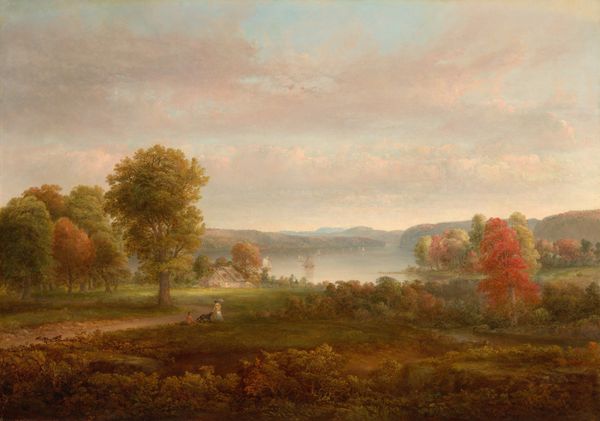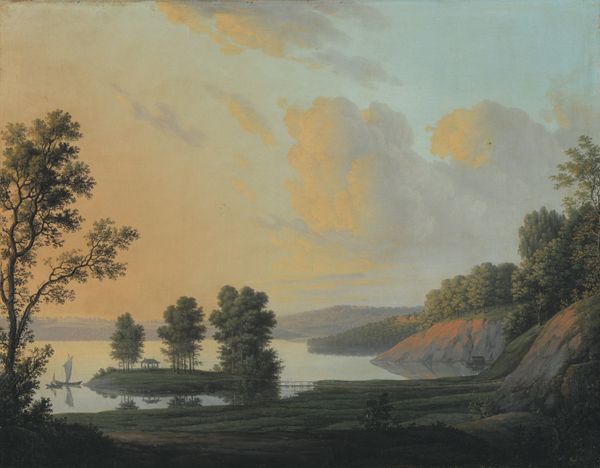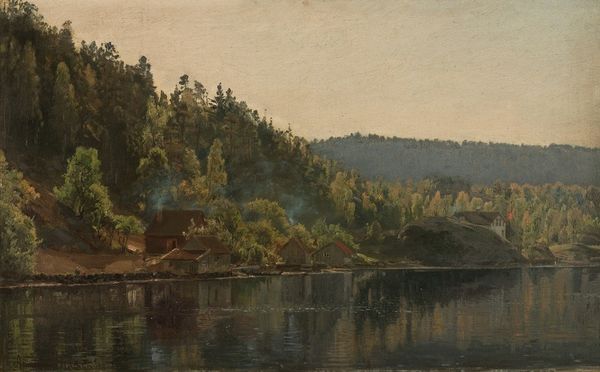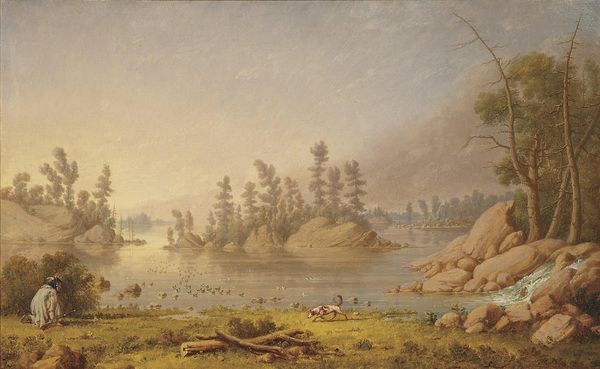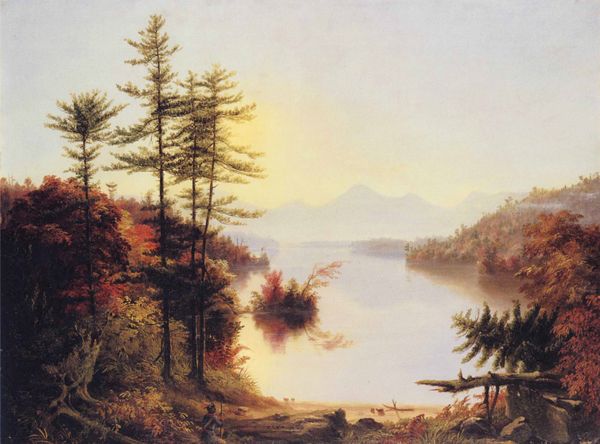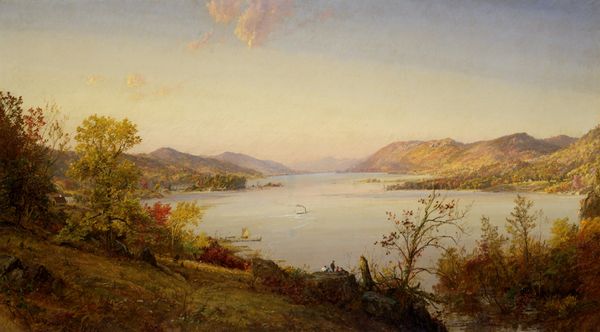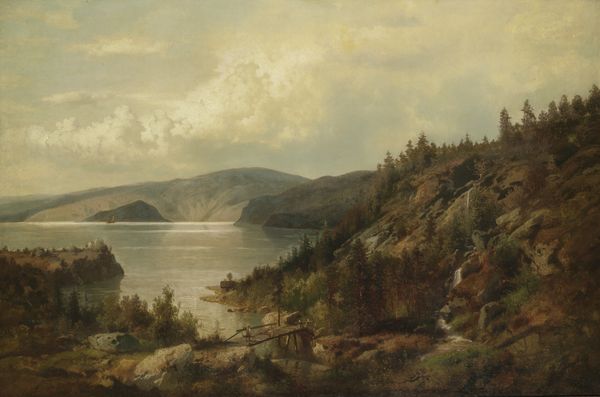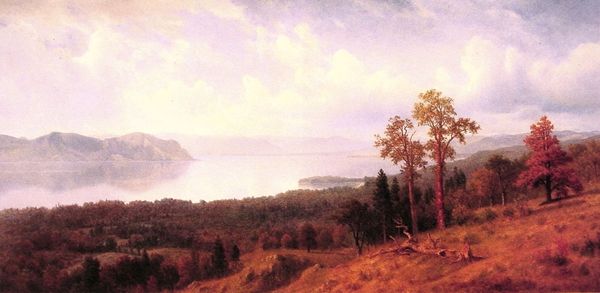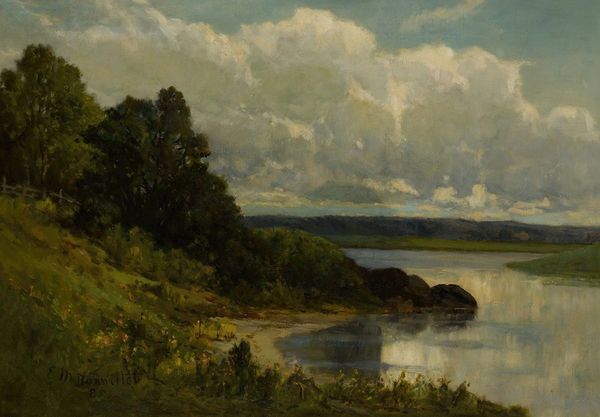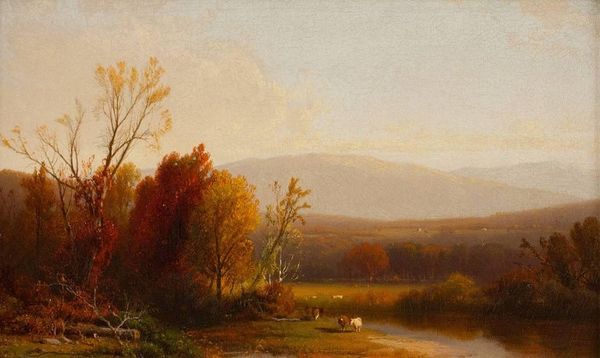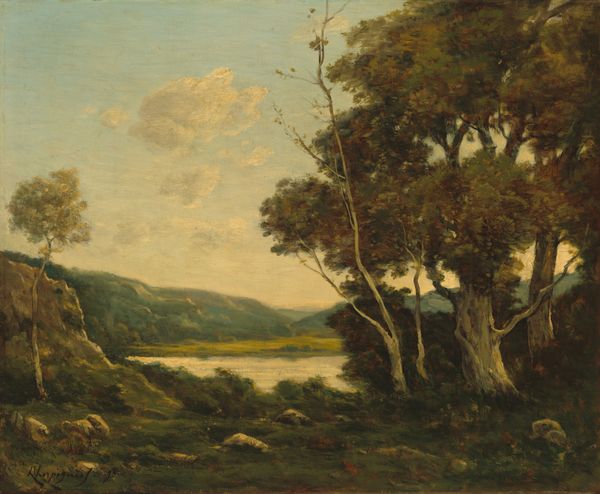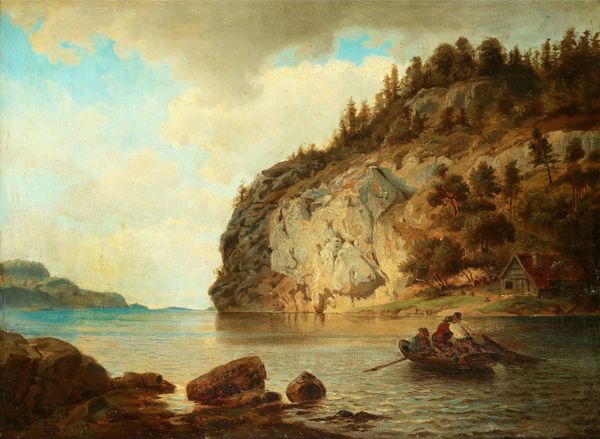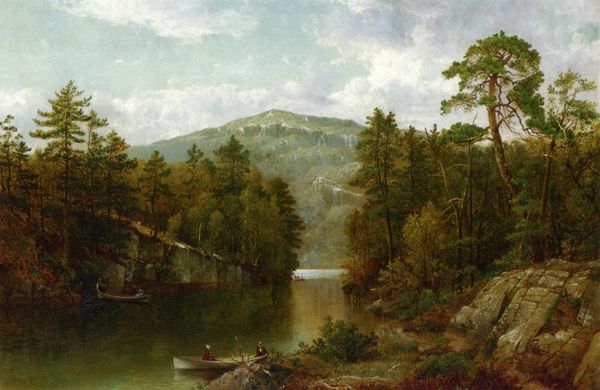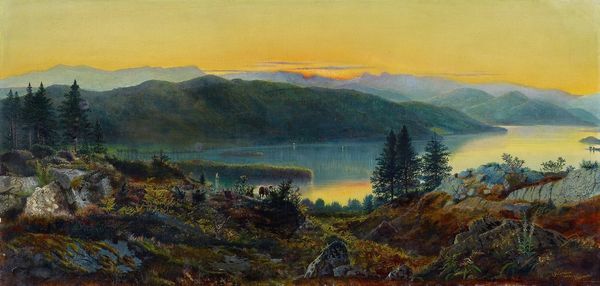
#
landscape illustration sketch
#
middle earth
#
countryside
#
landscape
#
impressionist landscape
#
nature
#
seascape
#
coastline landscape
#
watercolour bleed
#
watercolour illustration
#
watercolor
Copyright: Public Domain: Artvee
Editor: So, this is Albert Bierstadt's "Landscape," circa 1890. The hazy light and calm water really give it a sense of serenity, almost romantic. How do you interpret this work within its historical context? Curator: Well, remember that Bierstadt was celebrated for his grand, panoramic landscapes of the American West. This, though smaller and more intimate, still speaks to the 19th-century’s fascination with the natural world. But think about the context: the late 19th century saw increasing industrialization. Do you see this painting as perhaps offering an escape from that encroaching urban landscape? A nostalgic vision? Editor: I think it could be! Especially because it idealizes the scenery; there aren't any signs of industry or human impact in the area. Does that align with Bierstadt's overall artistic agenda? Curator: Absolutely. Artists like Bierstadt, supported by wealthy patrons and promoted by institutions, helped to shape a particular vision of the American landscape. This vision was, in turn, crucial for nation-building, westward expansion, and even tourism. Think about how images like this influenced ideas about manifest destiny, and what was lost in that idealized view. Who benefited and who was excluded from that romantic vision? Editor: That makes me think about the people whose land this *actually* was – were the indigenous people written out of the story? Curator: Precisely. These landscape paintings often omitted any signs of Indigenous presence, contributing to a narrative of empty, pristine wilderness waiting to be “discovered” and settled. Editor: That's a perspective I hadn't fully considered before. It makes you see the painting differently. Curator: It does, doesn't it? Considering art’s role within its historical moment, particularly how it reflects power structures, that's essential. Editor: Definitely. Thanks for making me think critically about not just what is in the painting, but what *isn't* as well.
Comments
No comments
Be the first to comment and join the conversation on the ultimate creative platform.
